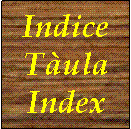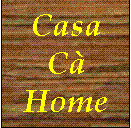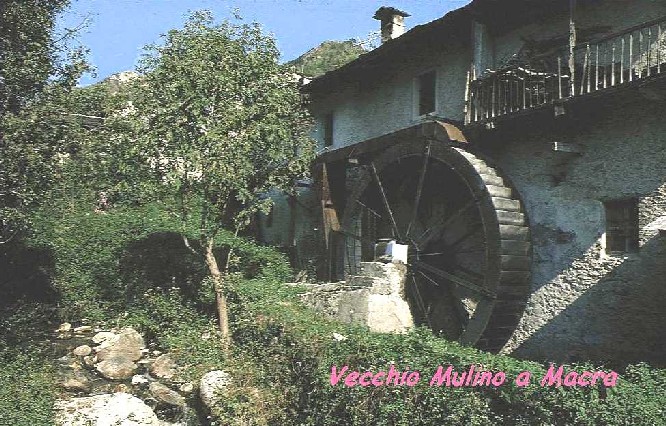


Piedmontese Spelling and Phonology
We have already indicated the phonetical symbols that we will use in the following.
a, b, c, d, e, ë, f, g, h, i, j, l, m, n, n-, o, ò, p, q, r, s, t, u, v, (eu), z.
We notice that some of these letters in different situations have different pronounciation. In particular (but not only) the vowel u in some diphthong. The actual different vocal sounds, in piedmontese, are 9. since we have to consider the two sounds of the letter e, narrow and large, as it is shown in the following table.
The first part of the following table is related to letters, then we show diphthongs having exceptions, in the last part.
| let. | use | pron. | description |
| a à |
& '& |
sounds as a in engl. car sounds as à in ital. città |
|
| b ëbb |
b [bb] |
sounds as b in engl. bug sounds as bb in engl. abbey a bit more forced |
|
| ce, cë, ci cc cc- che, chë, chi ëcc + e, ë, i ëcc + other ch c |
[ch] [ch] [ch] c, k [chch] [cc], [ck] c, k c, k |
sounds as ch in engl. cheese (end of word) sounds as ch in engl. church (followed by consonant) sounds as ch in engl. church sounds as k in engl. kit sounds as cc in ital. freccia sounds as cc in ital. rocca (end of word) sounds as ck in engl. pack (other cases) sounds as c in the engl. cat |
|
| d ëdd |
d [dd] |
sounds as d in engl. dot sounds as dd in engl. daddy a bit more forced |
|
| e e è é |
e æ æ, 'æ e, 'e |
(in open syllables) sounds as e in engl. bed (in syllables ending by consonant) sounds as a in engl. and sounds as a in engl. and or è in french cafè sounds as e in engl. bed or er in french. parler |
|
| ë | &, '& | short sound as the one required for pronouncing an isolated consonant. It sounds as i in engl. sir but is much more shorter. |
|
| f | f | sounds as f in engl. after. | |
| ge, gë, gi gg gg- ghe, ghë, ghi ëgg + e, ë, i ëgg + other gh g gn |
j j j g j g g g [gn] |
sounds as j in engl. jump (end of word) sounds as j in engl. jump (followed by consonant) sounds as j in engl. jump sounds as g in engl. get sounds as gg in ital. raggio sounds as gg in ital. aggancio (end of word) sounds as g in engl. bag (other cases) sounds as g in the engl. got unique sound that sounds as gn in ital. compagno |
|
| h | - | mute auxiliary consonant | |
| i ì |
i 'i |
sounds as i in engl. quick sounds as ì in ital. così |
|
| j j |
y i |
sounds as y in engl. yard sometime sounds as ee in engl. bee associated to i is (often) not pronounced |
|
| l | l | sounds as l in engl. lake | |
| m | m | sounds as m in engl. my | |
| n n n nn nn ënn |
n [ng] [ng] [ng]n n [nn] |
(beginning or inside a word) sounds as n in engl. node (inside the worrd) if followed by guttural or sibilated consonant, as in engl. sink (end of word) sounds as ng in engl. doing sounds as ng in engl. doing followed by n in engl. node (end of word) sounds as n in engl. node sounds as nn in engl. banner a bit more forced |
|
| n- + vowel | [ng] | sounds as [ng] in engl. doing | |
| o ó |
u 'u |
sounds as u in engl. pull sounds as oo in engl. boot |
|
| ò | o | sounds as o in engl. pocket | |
| p ëpp |
p [pp] |
sounds as p in engl. ping sounds as pp in engl. pepper a bit more forced |
|
| qu | qu | sounds as qu in engl. queen (composite sound) | |
| r ërr |
r [rr] |
sounds as r in engl. row sounds as rr in engl. arrow a bit more forced |
|
| s s ss ëss s-c |
s z s [ss] s[ch] |
(initial or with consonant) sounds as s in engl. sir (between vowels or final after vowel) sounds as s in engl. rose (between vowels of final after vowel) souns as s in engl. sir sounds as ss in engl. mess a bit more forced souns as s in engl. sir followes by ch in engl. church (composite sound) |
|
| t ëtt |
t [tt] |
sounds as t in engl. top sounds as tt in engl. cattle a bit more forced |
|
| u ù |
[ue] '[ue] |
sounds as u in french. sur sounds as ue in french. rue |
|
| v v v v |
u w v . |
(final or before dental consonant) sounds as u in engl. put (before dental consonants, sometime) sounds as w in engl. what sounds as v in engl. vote between vowels is (often) written but not pronounced. |
|
| z | z | sounds as s in engl. rose | |
| eu | [oe] | diphthong with unique sound, that sounds as eu in french. feu | |
uà |
qua quà |
u& u'& |
diphthong with composite sound, that sounds as ua in engl. quantum |
| ùa | [ue]& | diphthong with composite sound, that sounds as ue in french. rue followed by a in engl. car | |
uè |
que guè |
ue uè |
diphthong with composite sound, that sounds as ue in ital. querela diphthong with composite sound, that sounds as u in engl. pull followed by a in engl. and |
| ùe | [ue]e | diphthong with composite sound, that sounds as ue in french. rue followed by e in engl. bed | |
àu |
au àu |
&u '&u |
diphthong with composite sound, that sounds as a in engl. car followed by u in engl. pull |
| aù | &'[ue] | diphthong with composite sound, that sounds as a in engl. car followed by ue in french. rue |
Some particularities: We draw the attention on three piedmontese letters, the vowels ë and ò and the consonant n-, that are considered independent letters, with their own sound and usage.
We saw above two letters: j, v that sometimes are written but not pronounced. For the letter j this happes often when it is associated with the vowel i, as in the article ij that has to be written in that way, but is just pronounced \ i \. Another example is the word fija (= daughter), that is pronounced \ fi& \.
The letter v is a bit odd. We saw above that sometimes it is pronounced as \ u \ this is certanly sure at the end of a word, as in the word euv (egg) whose pronounciation is \ [oe]u \. Inside a word it is easy that its pronounciation is still \ u \ when it is followed by a dental consonant like t, d, but usually only if the "piedmontese style" of the word is not altered. For example: gavte (= get off) is pronounced \ g&ute \, but servte (= help yourself) is pronounced \ særvte \ (since the word is a composition of serv - te, verb and pronoun). In words in which the letter v is preceded or followed by a letter o, usually it is written but not pronounced (if it is not the starting letter of a word). Examples: rova (= wheel) is pronounced \ ru& \, but voi (= you (plur.)) is pronounced \ vui \. Then sometimes, instead of a plain \ u \, the prinounce is more similar to a \ w \, but the differencs is very little, and never inportant.
In classical piedmontese, the italian sounds of the letter z do not exixt, as well as the "fricative" italian sounds of the groups gli, gle, sci, sce,. Also the french pronounciation of j as in the french word je (= I) is not part of the piedmontese phonology.
We remark, anyway, that is some part of Piedmont, there exist "local" characteristic sounds that are outside the basic ones described above. They are:
| let. | use | pron. | description |
| r^ | In Monfrą (Monferrato) sometimes instead of l or r | [r^] | It is like the r of the engl. rib, but pronounced with the tongue folded backward |
| g^ | gi ; ge In Biella's area | [zh] | Like si in the engl. vision or the j in the french jardin |
| sc | sci ; sce In Biella's area | [sh] | Like ssi in the engl. mision |
The phonetical symbols used are not all in the Merryam WWWEBSTER Dictionary, and are described in the table. This is just for information, since we deal, in this site, with classicl piedmontese. The use that we could do of this is just occasional.
Then we have a look at the usage of accents in piedmontese. There are two accents: an acute accent ' and a grave accent `. The first is used only, when required, on the vowels e, o when the sound is a stressed \ e , u \. The second one is used in all the other cases of accentuation. As examples: rÓndola (= swallow) is pronounced \ rundul& \, while fÒrt (= strong) is pronounced \ fort \, the word andé (= to go) is pronounced \ &nde \, while cafè (= coffee) is pronounced \ c&fæ \.
In piedmontese the accentuation is more used than in italian, even if not all the words require the indication of the stress. As a rule, in piedmontese, the stress is on the last but one syllable of the word ending with vowel and on the last syllable of words ending by consonant, and in this case the stress is not required to be marked. Another need of the accent is for distinguish the two sounds of e. As a rule, in open syllable (ending with e in this case) this sound is "narrow" (\ e \) and in closed ones (ending by consonant) this sound is "large" (\ æ \). When this rule is respected the accent mark is not required. In the following there is the list of cases requiring the explicit accent mark:
- Words ending with a stressed vowel. cafè, mangé, ramà, batù
- Words ending by vowel with stress on last but two syllable. róndola, nìvola, stiribàcola, régola
- Words ending by consonant with stress NOT on the last syllable. véder, quàder
- Words with pronunciation making exception. tèra, amèra, capél (the last - ending in el - is anyway nearly a rule, not an exception)
- On the diphthong èi when the pronounciation is \ æi \. piemonèis, fransèis
- For distinguishing words with same writing and different meaning. frà (= monk), fra (= between)
- For the correct pronounciation of the above seen diphthongs (ua, ùa, etc.)
- Every time it is required to avoid confusion
We quickly see now the usage of the dash.
A first use is with adverbs of place when they are associated to a noun or pronoun, corresponding to english expressions like this dish here, that one there. The dash, in this case connects the object to the adverb, and the two sentences are cost piat-si, col-là where piat is the noun (dish), col is the pronoun (that), and si, là are the adverbs (here, there).
Another use of the dash is with the personal verbal pronoun (that we will see later in detail) when it is connected to a dative personal pronoun or still to the adverb of place i (having a meaning similar to "there" in the expression "there is"). We explain this point with some examples:
a-i é ël sol (there is the sun) where a is the personal verbal pronoun, i correspond to "there", é is the verb, then ël sol is "the sun".
chiel a-j dis (he says to him) where chiel means "he", a is the personal verbal pronoun, j means "to him", dis is the verb.
mi i-j diso (I say to him) where mi means "I", i is the personal verbal pronoun, j means "to him", diso is the verb.
mi i-i vado (I go there) where mi means "I", i is the personal verbal pronoun, i means "tthere", vado is the verb.
Other usages of the dash, always connected with pronouns or pronominal particles, will be seen later, speaking about pronouns.
na stèila, set ëstèile (a star, seven stars). tre fnoj, set ëfnoj (three fennels, seven fennels).
In Piedmontese the apostrophe is more used than in italian or in french. Instead of being limited to articles and articled prepositions (and few other unusual cases) at the end of a word, when the following word starts by vowel, in Piedmontese is often used at the beginning of a word that follows a word ending by vowel. In particular often the apostrophe is used instead the initial a of words srarting with an... or the initial i of words srarting with in... or the initial ë of words srarting with ën... (we will see that these initials are sometime "interchangeable"). For example we can write I vado ancora (I still go) but also I vado 'ncora. Anyway, if a writer is not well skilled, he'd better not to use this mechanism, since it is possible to make mistakes (it is not generally applicable).
![]()

An old water-mill
in Maira valley
(photo B. Garmondi)
